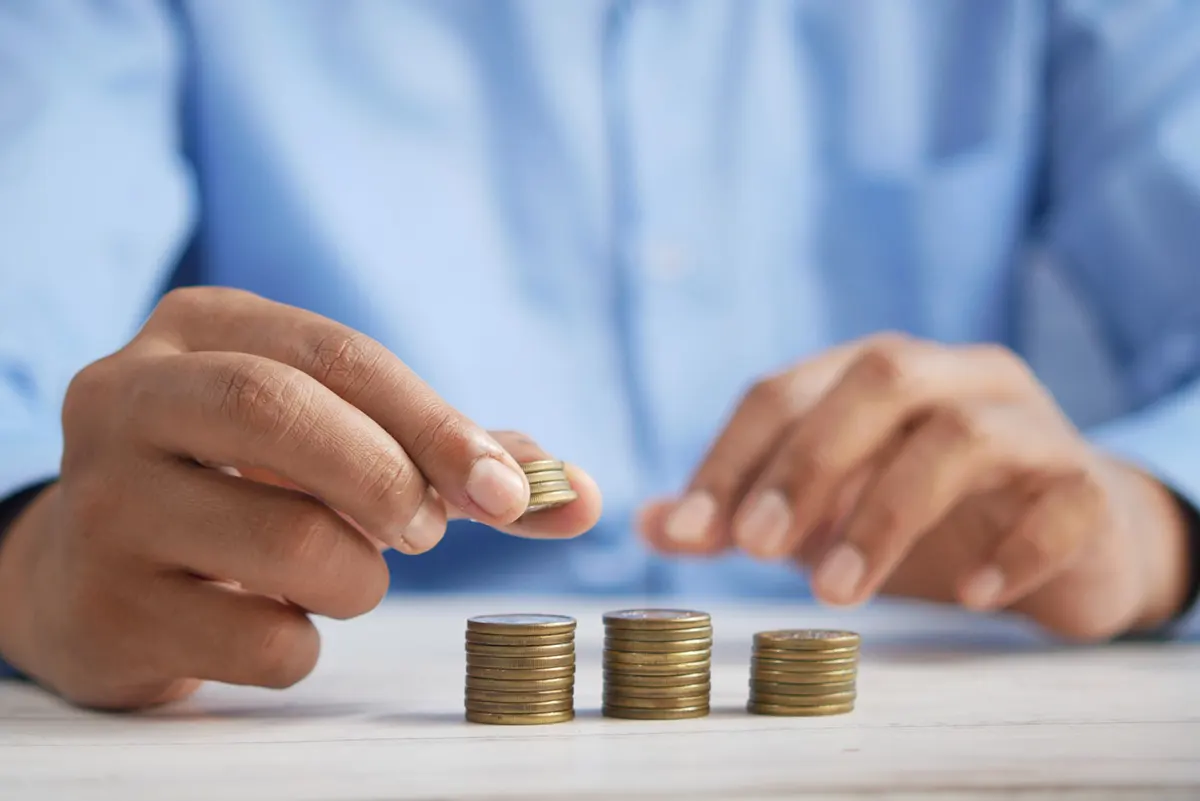How it works: Capital gains tax on the sale of a property
When is capital gains tax payable on the sale of property? And at what rate are capital gains taxed? We answer these questions and more. The post How it works: Capital gains tax on the sale of a property appeared first on MoneySense.

Capital gains. Even the mention of these two words together can immediately conjure myths about owing the government 50% of the money earned from selling a home. But, like most rumours, it’s only half true—for now. You may have also heard that Budget 2024, the Canadian federal government introduced an increase on certain capital gains. That’s 100% true—for a brief while.
Capital Gains Tax News
The federal government says it is deferring the implementation of a hike to the capital gains inclusion rate to next year.
The deferral moves back the implementation of the change from June 25, 2024 to January 1, 2026.
The deferral offers a reprieve for Canadians and businesses who were seeking clarity as the tax deadline nears. The hike is meant to raise the portion of capital gains on which companies pay tax to two-thirds from one-half. The policy would also apply to individuals with capital gains earnings above $250,000.
While the hike was proposed in the Liberals’ latest federal budget and introduced later as a ways and means motion, it hasn’t passed in Parliament, which is prorogued until March 24.
However, the Canada Revenue Agency had already started to administer the changes because parliamentary convention dictates that taxation proposals are effective as soon as the government tables a notice of ways and means motion.
—This report by The Canadian Press was first published Jan. 31, 2025.
For individuals with a capital gain of more than $250,000, they will be taxed on 66.67% of the gain as income—up from the current 50% rate, according to Budget 2024. However this has been delayed until 2026 by the Department of Finance Canada on January 31, 2025. This inclusion rate change comes into effect on June 25, 2024. Every week, our inbox is full of letters from readers asking how to avoid the capital gains tax. They want to know how to work the system and keep more money in their pockets. Listen, it’s valid to want to hold on to the money earned off of the sale of a secondary residence (cottage, second home) and an investment property (rental or commercial property).
According to RE/MAX Canada’s Cottage Trends in Canada in 2024 report, the average price of a cottage in Canada is expected to rise this year by 6.8% from 2023—which is not small change. So, the idea that you’re forking over half your money simply isn’t true. The need to dispel this rumour is what inspired this guide to capital gains on the sale of property, which will answer the most common questions with our most popular articles on the topic.
And while we cannot show you how to avoid taxes (it’s one of two things you can’t avoid in life—death is the other), I can share insights on how to use any Canada Revenue Agency (CRA) rules in your favour.
Why trust us
MoneySense is an award-winning magazine, helping Canadians navigate money matters since 1999. Our editorial team of trained journalists works closely with leading personal finance experts in Canada. To help you find the best financial products, we compare the offerings from over 12 major institutions, including banks, credit unions and card issuers. Learn more about our advertising and trusted partners.
What are capital gains in Canada?
According to the MoneySense Glossary, “a capital gain is the increase in value on any asset or security since the time it was purchased, and it is ‘realized’ when the asset or security is sold.” In the case of this article, the asset we are dealing with is property, which could be a cottage, second home, investment or rental property, as stated above.
Can you have a capital loss?
Our definition of capital gains begs the question: “Can you have a capital loss?” Yes, you can. A capital loss occurs when you sell a property for less money than you originally purchased it for. In some cases, you might be able to use a capital loss to reduce your income for your tax return, if you are reporting capital gains in the same year.
Speaking of tax, a capital gains tax is the money owed in taxes from the income earned. It’s not a specific tax, per se…. But more on that below.
For more on the ins and outs of how capital gains works, read: Capital gains explained.
How are capital gains calculated? How are they taxed?
Before we dive into the tax part, let’s go through how to calculate capital gains on the sale of a property. Essentially, this calculation figures out how much the property’s value grew from when you first bought it to the day you sold it. This above is a simple-math calculation of the capital gain.
Capital gain = purchase price – selling price
We will dive even deeper to reduce the amount of capital gains you would claim on your tax return (more on that below).
So, it’s not that capital gains are taxed at a rate of 50%, but it’s that 50% of the capital gains are taxable. And the capital gains tax rate depends on the amount of your income. You add the capital gain to your income for the year, including money you receive from your job, side hustles, dividends in non-registered accounts, any selling of assets and so on.
Capital gains are taxed as part of your income on your personal tax return. Below are the federal tax brackets for 202, which can give you an idea of how much tax you may owe for the year. You will need to figure out the provincial tax bracket rate for your province or territory, too. Since Canada has a tiered tax system, you will have to do a bit of math to estimate your annual income tax, breaking down your total tax into the brackets, and the amount owed for each bracket.
The first column is the tax rate, meaning the percentage of the income that is considered taxable (this doesn’t include deductions, of course). The second column is the range of income for that tax rate. Say you earn $60,000 a year, $55,867 would be within the 15% tax rate and $4,133 is in the 20.5% rate ($60,000 – $55,867). That’s right your income is taxed through the tax brackets, and not on a flat tax rate. This is what’s called “a progressive tax system,” meaning that Canadians with lower incomes are taxed at a lower rate, and tax rates rise incrementally for higher-income earners.
15% Up to $55,867 20.5% $55,868 to $111,733 26% $111,734 to $173,205 29% $173,206 up to $246,752 33% $246,753 or more
Read on for the provincial and territorial tax brackets.
And, of course, to really get down to the nickel of how much you ultimately owe, you will need to do your tax return and receive a notice of assessment.
It’s worth noting that there can be other factors for calculating capital gains. Here are some articles that delve deeper into some of these specific situations.
- Can transferring ownership of a house help avoid probate tax?
- Federal Budget 2024: How it will affect Canadians’ finances and taxes
- Cutting down on tax payable when selling real estate
Can you avoid capital gains tax?
It’s not so much that you can avoid capital gains tax, but that there are CRA rules that you can take advantage of to reduce the amount you may owe. Here are a few:
Principal residence exemption
First is the principal residence exemption. You don’t pay tax on the sale of your home, but you may have to for a secondary property or residence, and/or investment property. According to the CRA, a property is exempt from capital gains tax if your situation meets these four criteria:
- “It is a housing unit, a leasehold interest in a housing unit, or a share of the capital stock of a co-operative housing corporation you acquire only to get the right to inhabit a housing unit owned by that corporation.
- “You own the property alone or jointly with another person.
- “You, your current or former spouse or common-law partner, or any of your children lived in it at some time during the year.
- “You designate the property as your principal residence.”
Accounting for outlays and expenses
There is also accounting for outlays and expenses. From your capital gain, you can subtract the costs necessary for selling the property, such as renovations and maintenance expenses, finders’ fees, commissions, brokers’ fees, surveyors’ fees, legal fees, transfer taxes and advertising costs.
Claiming capital losses
You can also claim capital losses when you have capital gains. So if you have assets, not limited to property, that you earned income on, you can lower your gains by applying your capital losses to that amount (until it reaches $0). That can be losses from other property, investments in non-registered accounts, and other capital.
The Ask MoneySense column has answered the following questions on reducing the amount of income for capital gains:
- When does the “plus 1” rule apply to a principal residence?
- How capital gains tax on property is divided in a divorce
- The tax implications for Canadians selling foreign real estate
- Capital gains when selling property to family
Who pays capital gains?
The obvious answer is whomever is earning the capital gain, right? Not always. There can be less obvious scenarios involving multiple owners or even unfortunate situations that include the death of a property owner. If that’s the case for you, our readers can relate. Here are some of the tricky circumstances they have faced when selling a property.
- How to carry back a capital loss for a tax refund
- The tax implications of buying a second home in Canada
- When your child moves into your rental property: Capital gains and how to claim principal residence exemption
Other questions about capital gains
We also have a category of questions about capital gains that can’t be categorized, but these articles are popular with readers. So we hope that they may be an asset to you, too—free of charge (see what I did there?).
- Reducing capital gains on a cottage
- Can you save tax by moving into your rental property?
- Principal residence exemption on death and capital gains with joint tenancy
The post How it works: Capital gains tax on the sale of a property appeared first on MoneySense.









































![United Lounge Hack: Flyers Are Cooking Up Secret Breakfast Sandwiches—Would You Try It? [Roundup]](https://viewfromthewing.com/wp-content/uploads/2025/01/united-mcmuffin.webp?#)
























.png?#)






